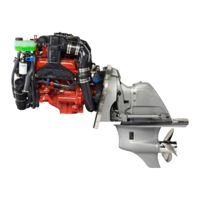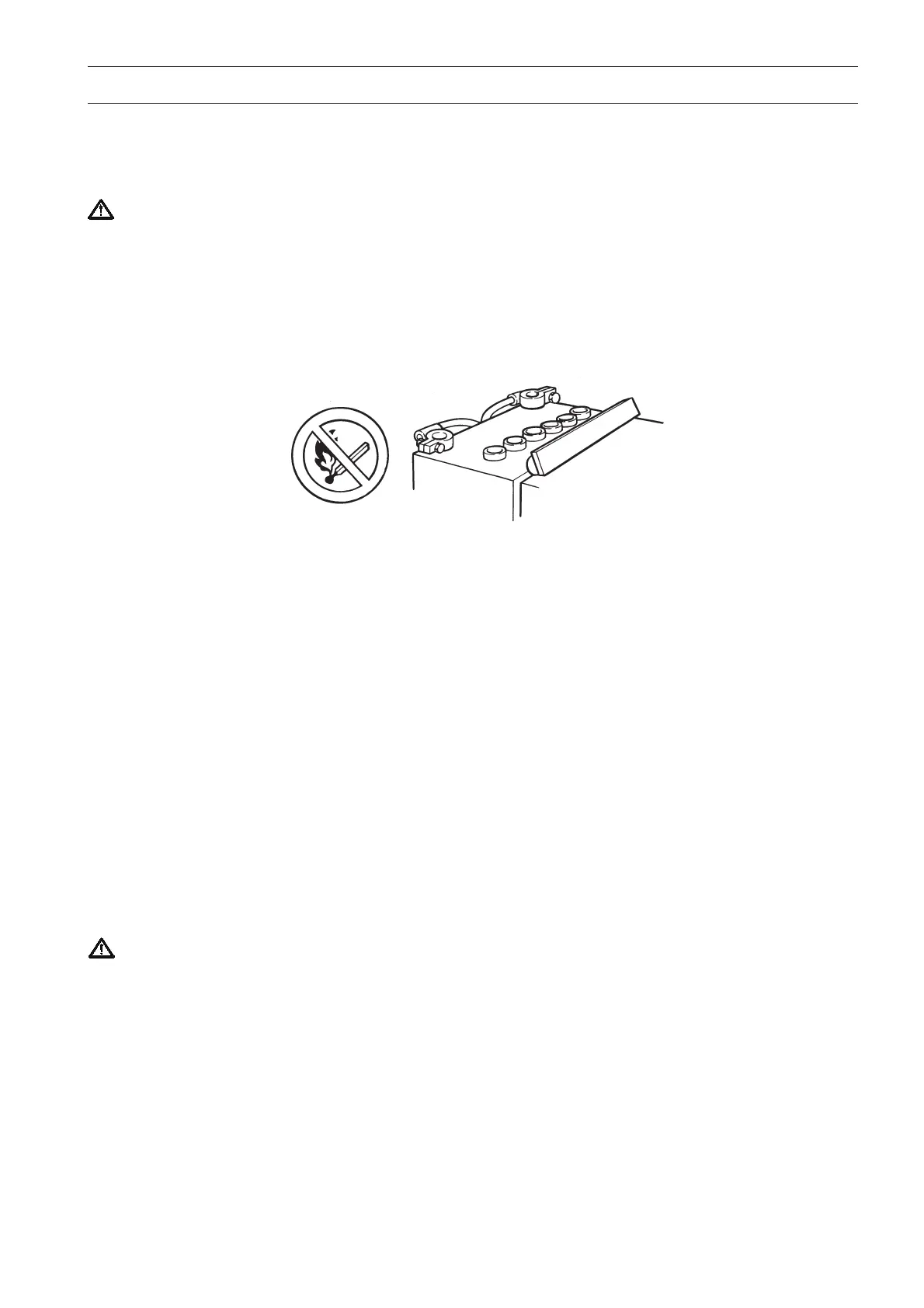57
Electrolytic corrosion
To protect the drive and propeller against galvanic
corrosion your boat and its propulsion unit have gal-
vanic corrosion protection. Leakage current from the
electrical system will prevent this protection system
from working and result in major damage. Leakage
current from the electrical system can be caused by
faulty equipment or incorrect installation of electrical
equipment.
IMPORTANT Electrolytic corrosion as a conse-
quence of leakage currents may cause serious
damage to your boat’s equipment within a short
time. Work on the boat’s low voltage circuit
should only be carried out by qualified/expe-
rienced personnel. Installation or work on the
shore power equipment must only be carried
out by electricians authorized to work with high-
voltage installations.
The following should always be observed: Route
and clamp electric cables so that they will not be ex-
posed to damp or bilge water in the keelson. The
main engine switch must be connected to the positi-
ve (+) terminal on the battery, and cuts off all power
consuming equipment as soon as the engine is stop-
ped. If an extra battery has been installed then there
must be separate switches for extra equipment. The-
re should also be a main switch between the auxilia-
ry battery positive terminal and the electrical equip-
ment fuse strip. The main switch for the auxiliary bat-
tery must cut off all power consuming equipment
connected to that battery and be turned off when
power is no longer needed. The engine or drive must
not be electrically connected to other equipment
such as the trim plane, bathing steps etc. The engine
and transmission must not be used as ground points
for radio or navigation installations or other electrical
equipment with separate ground cables. All separa-
te ground cables must have a common ground
point, separated from the engine and transmis-
sion. If shore power is connected a protective gro-
und should not be connected to the engine or to any
other ground terminal on the boat. Transformers con-
nected to shore power must be installed so that the
protective ground on the input side (120/220 V) and
the negative connection on the output side (12 V) are
not connected.
Electrical systems
The electrical system has a voltage of 12 V. The generator has a charging regulator to make it more effective.
The engine also has semi-automatic and normal fuses which cut off the current if there is an overload. There
are also fuses for the trim pump and the Power Trim controls.
WARNING! Danger of explosion! Never allow an open flame or sparks near the battery area. Always use
eye protection when working with the batteries. The battery electrolyte contains extremely corrosive sulfu-
ric acid. If electrolyte comes into contact with the skin: Wash it off with soap and plenty of water. If battery
acid comes in contact with the eyes, immediately flush with copious amounts of water. Contact a doctor
imme-diately.

